This document discusses video quality analysis for H.264 based on the human visual system. It proposes an improved video quality assessment method that adds color comparison to structural similarity measurement. The method separates similarity measurement into four comparisons: luminance, contrast, structure, and color. Experimental results on video sets with two distortion types show the proposed method's quality scores are more consistent with visual quality than classical methods. It also discusses the H.264 video coding standard and provides examples of encoding and decoding experimental results.
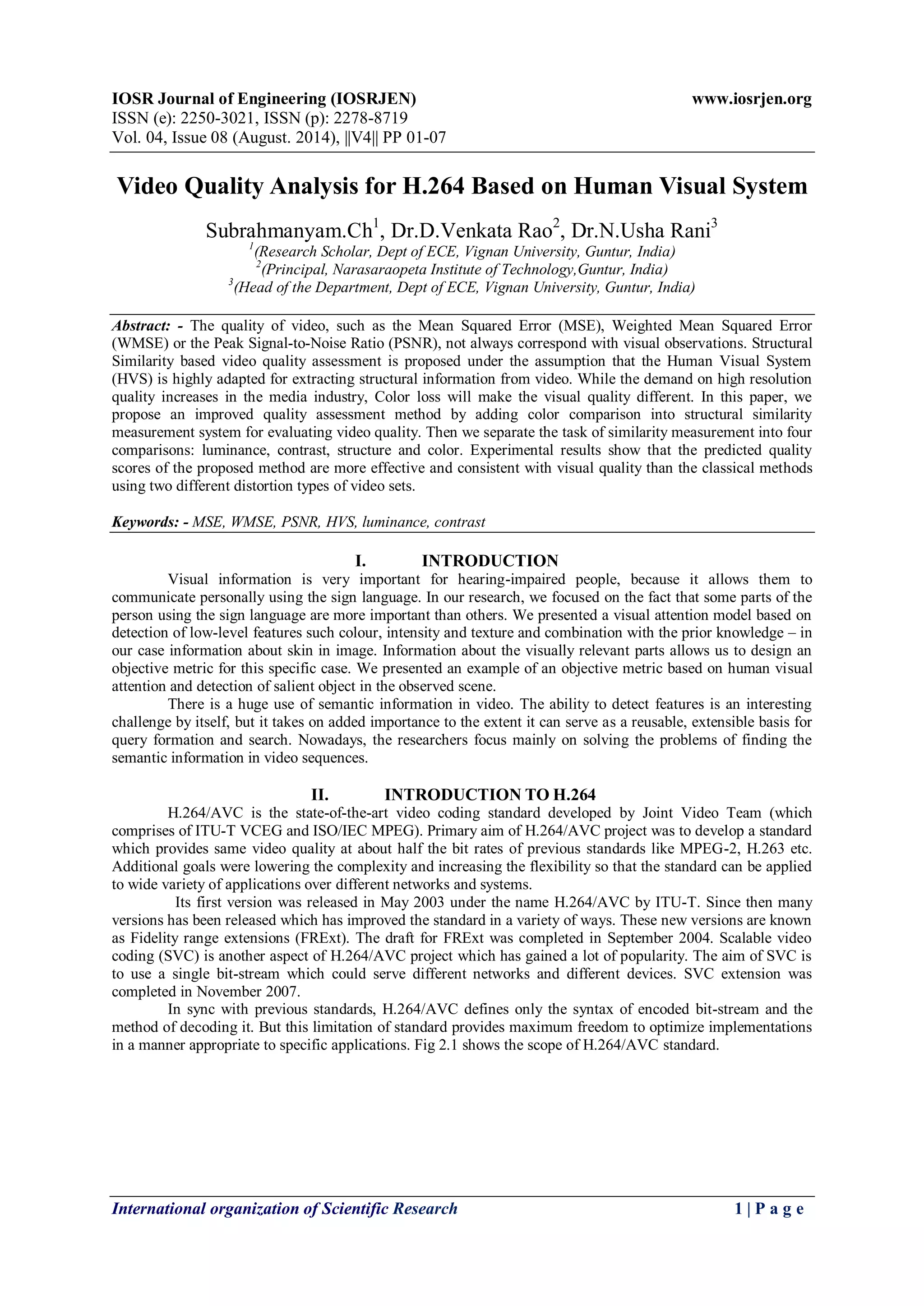
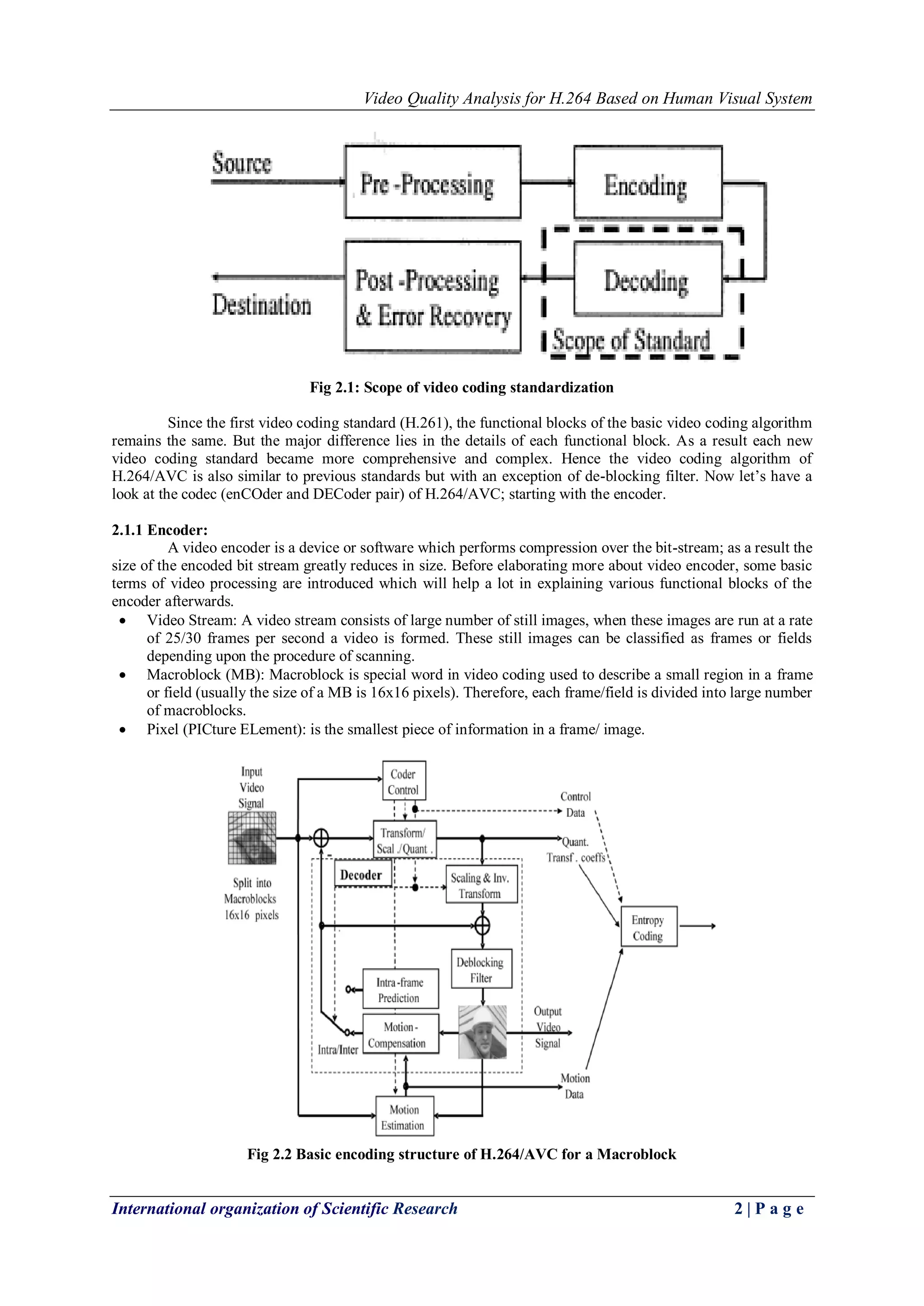

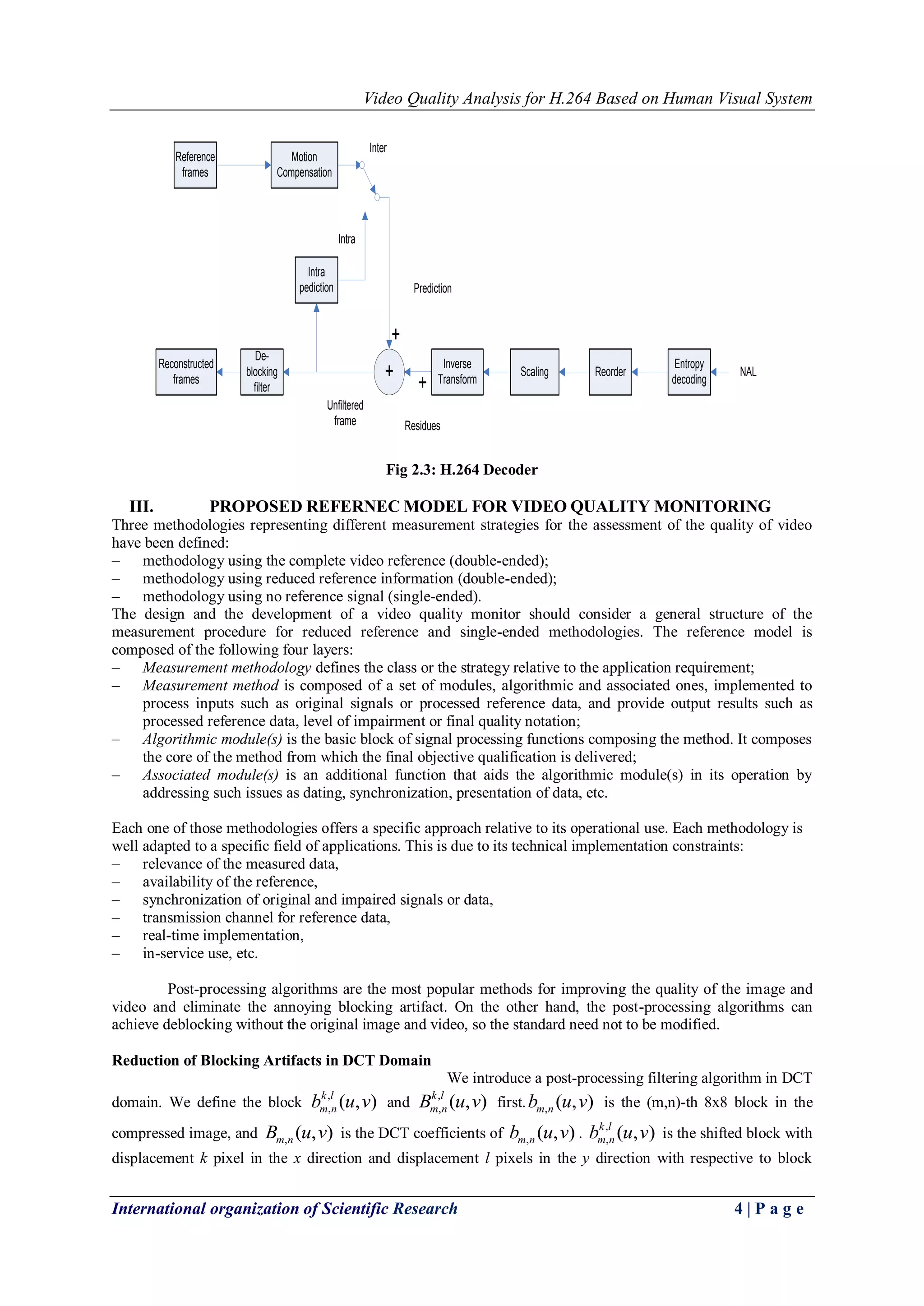
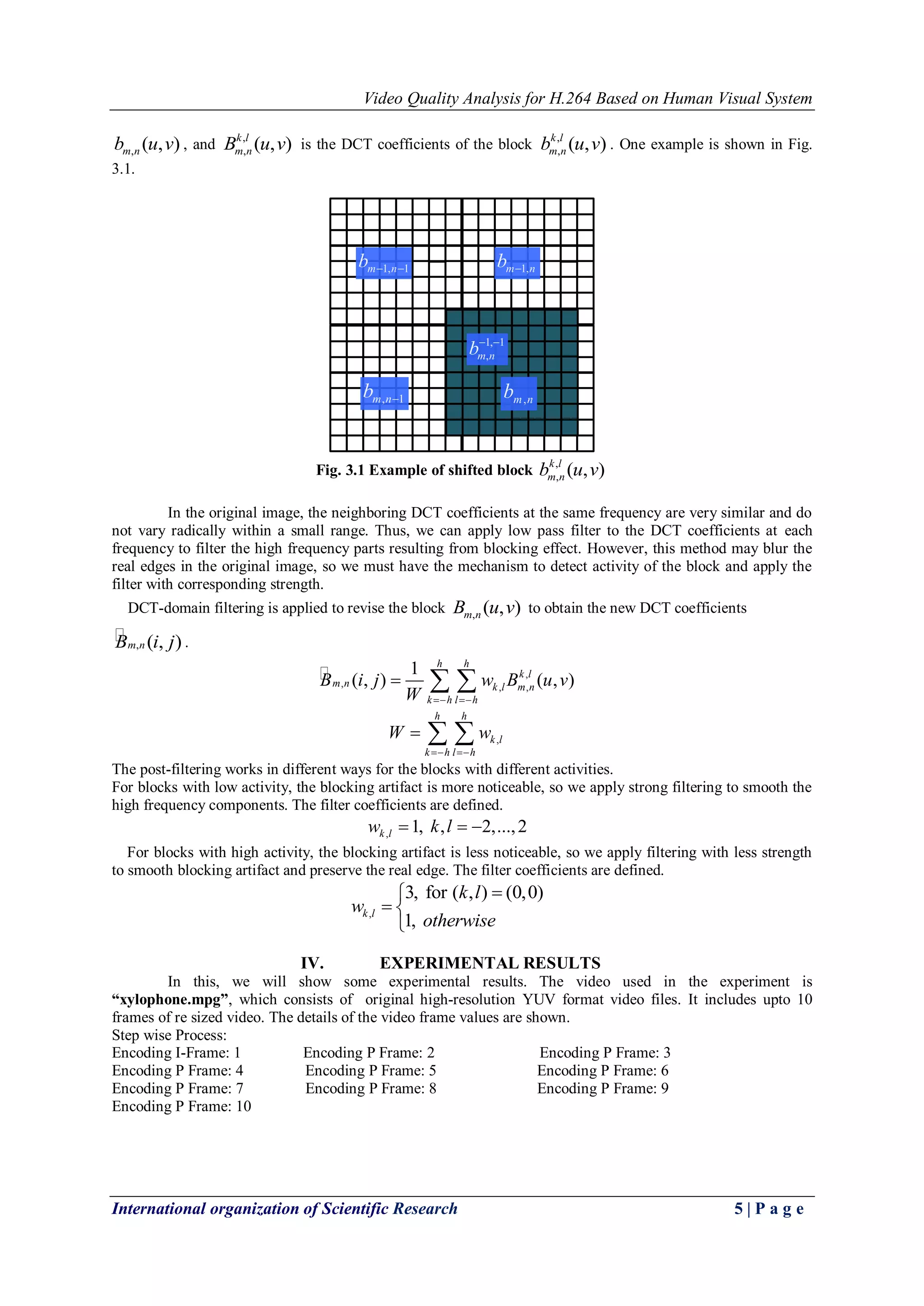
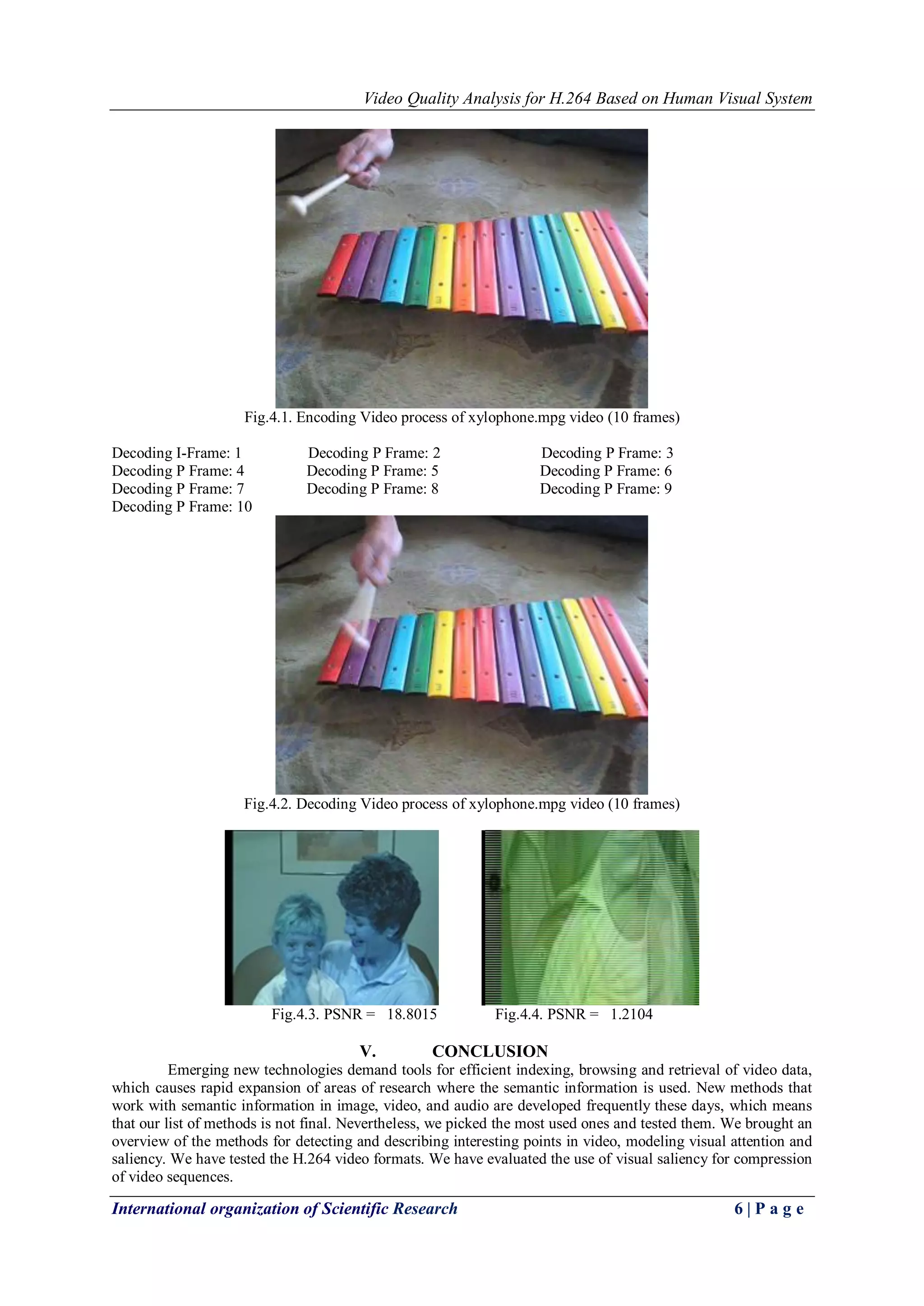
![Video Quality Analysis for H.264 Based on Human Visual System
International organization of Scientific Research 7 | P a g e
REFERENCES
[1] A. C Bovik. Introduction to Image and Video Quality Assessment[OL]. [2009-3-17]. http://live.ece. utexas.edu /research/quality/intro.htm. [2] C J van den Branden Lambrecht, Ed. Special Issue on Image and Video Quality Metrics [J]. Signal Process., 1998, 70(3): 155-294. [3] VQEG. Final Report from the Video Quality Experts Group on the Validation of Objective Models of Video Quality Assessment [OL]. (2000-3-15) [2009-3-17]. http://www.its.bldrdoc.gov/vqeg/projects/ frtv_phaseI/COM-80E_final_report.pdf. [4] T N Pappas and R J Safranek. Perceptual Criteria for Image Quality Evaluation. In: A. C Bovik, ed. Handbook of Image &Video Processing [M]. San Diego: Academic Press, 2000: 669-684. [5] Z Wang and A C Bovik. A Universal Image Quality Index [J]. IEEE Signal Processing Letters, 2002, 9(3): 81-84. [6] G H Chen, C L Yang, L M Po, et al. Edge-based Structural Similarity for Image Quality Assessment [C]. ICASSP, Toulouse, France, 2006: II-933-II936. [7] Commission Internationale d'Eclairage. CIE Publication No.15.2, Colorimetry [S]. 2nd Ed. Vienna: CIE Central Bureau, 1986. [8] Commission Internationale d'Eclairage. CIE Publication No. TC1. 47, Hue and Lightness Correction to Industrial Colour Difference Evaluation [S]. Vienna: CIE Central Bureau, 2000.
[9] VQEG. Final Report from the Video Quality Experts Group on the Validation of Objective Models of Video Quality Assessment, Phase Ⅱ VQEG [OL]. (2003-8-25) [2009-3-17]. http://www.its.bldrdoc.gov/ /projects/frtv- _phaseII/downloads/VQEGII_Final_Report.pdf.](https://image.slidesharecdn.com/a04840107-140908045130-phpapp01/75/A04840107-7-2048.jpg)